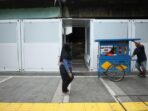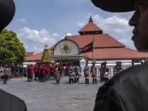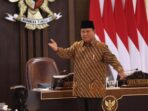Jakarta – PT ASDP Indonesia Ferry has once again received non-cash state capital injection (PMN) in the form of 10 passenger motor ships owned by the Ministry of Transportation worth Rp460 billion in 2024, after previously in 2023 receiving PMN in the form of 12 passenger ships worth Rp388 billion in the form of state-owned goods (BMN).
Responding to this, Transportation Observer Bambang Haryo Soekartono said that PT ASDP should prioritize requests to the government for the revitalization and addition of docks for main commercial routes which currently experience an imbalance between the number of ships and the dock capacity.
“If for example, PT ASDP has received assistance in the form of ships for inter-island routes without having to spend its own capital, it is hoped that PT ASDP can allocate some of its profits which in 2022 reached Rp585 billion, and in 2023 reached Rp637 billion to be used for revitalization and additional docks on main commercial routes, because a portion of PT ASDP’s profits are obtained from operating ports on main commercial routes for both port services obtained from passengers and vehicles, as well as dock services obtained from ships operating on those routes,” he said.
So, continued the owner of the nickname BHS, the ports for PT ASDP are production tools just like ships. Therefore, PT ASDP should also allocate funds from its profits for the construction of docks on the 6 Main Commercial Routes.
“If it is not enough from these profits, then PT ASDP should request additional funds from the government for dock construction and revitalization. The main commercial routes such as Merak – Bakaeuheuni (Java – Sumatra), Ketapang – Gilimanuk (Java – Bali), Padang Bai – Lembar (Bali – Lombok), Lombok – Pototano (Lombok – Sumbawa), Bajoe – Kolaka (South Sulawesi – Central Sulawesi), Palembang – Muntok (South Sumatra – Bangka),” added BHS.
All of these routes, said BHS, have docks that can only accommodate 30-50% of the number of ships operating on those routes. This is certainly very concerning and often results in long traffic jams such as in Merak – Bakaeuheuni, Ketapang – Gilimanuk, and several other crossing routes.”
“We should understand that PT ASDP’s production tools are not only ships but also docks. Because income and profits from port services are also captive and guaranteed to benefit. Because PT ASDP is the only one appointed by the government in the crossing transportation mode,” said BHS.
It is only right, said the alumnus of the ITS Surabaya Naval Engineering, for PT ASDP to immediately add docks on crossing routes especially on Main Commercial Routes that often experience long traffic jams due to the unbalanced number of docks compared to the number of ships.
“It is hoped that the number of docks on these commercial routes are enough to anticipate the number of ships operating to become additional installed carrying capacity. So that ships owned by private shipping companies and PT ASDP can be operated and utilized by consumers in full, not like what is happening now,” he said.
For example, continued BHS, when there was a long traffic jam along 19 km some time ago on Merak – Bakaeuheni route. Ironically, there are around 40 ships that cannot operate because there are no docks. So those idle ships cannot be utilized to streamline traffic for consumers. This is certainly very detrimental and can impede the economic growth of the region and the nation. BHS concluded.





